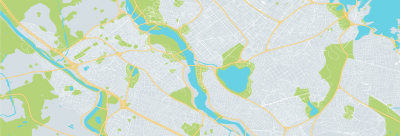Day 1: Departure to the Sredny Peninsula
Meals included: a snack in a picturesque place, a hearty dinner.
Sights of the Sredny peninsula, stops in picturesque places + history.
Departure from the Park INN and Azimuth hotels or from your address at 08:00-8:30.
Dear guests, we are going to the protected areas and before the trip we will definitely stop by the store, because on the peninsula you will have nowhere to buy medicines, your favorite drinks and sweets.
On this day you will visit:
Memorial complex "Valley of Glory".
It was on these hills that the heaviest and bloodiest battles for the Soviet Arctic were fought during the Great Patriotic War. Now there is a memorial complex dedicated to the memory of the fallen in those difficult times. Search operations in these places are continuing, so the list of names buried in mass graves continues to grow.
Waterfalls (you can see salmon spawning). Drunken Creek, traditional canonical stop in front of the pass, lunch, Musta-Tunturi pass.
The pass. No words can describe his rugged beauty. In summer, it impresses with blue lakes in the palms of dark mountains. In winter, the vastness of the white robe. In autumn, it "bleeds" with rare clusters of mountain ash, which has ventured so far.
The pass itself begins from a Drunken stream, the stormy stream of which the road crosses, barely turning away from the Titovka River. As you understand, the name "Drunk" is directly related to intoxicating drinks, and most of all to "voroshilovka". That's what the military used to call stolen alcohol (stolen "awl").
Visit to the memorial place of military glory "The Height of the Egg".
This was a key position, the capture of which made it possible to conduct side fire and covered the offensive on the main front line.
The height of the Egg has changed hands many times. The place is open there, for three years it has not been possible for either side to remove the dead. The entire rock is battered, covered with thousands of shells, mines and bullets, the entire surface is strewn with a carpet of rusty fragments and shell casings.
Inspection of the defense line during the Great Patriotic War.
Moving along the Sredny, Rybachy peninsula.
Arrival at the tourist base, a hearty dinner.
Take a walk along the coast, enjoy the scenery or go to a field bath (for an additional fee).
Keep an eye on the forecast and look at the sky, because the northern lights may flare up there (from mid-August).
Day 2. Rybachy Peninsula
Events of the day: today you will visit the most beautiful places of the Russian North!
Meals included: breakfast on the coast, lunch in a picturesque place, dinner on the coast
Attractions of the Rybachy Peninsula:
We will drive through several fords to Cape Cow and find out why it is so called. Opposite the archipelago of the Kian Islands, we will visit the sandy beach of the Kian Littoral. Here, at low tide, the water recedes from the shore edge by hundreds of meters, revealing snow-white sand.
We will visit a pillbox during the war and find out why it was almost impregnable. Then we will go to Cape German! This is the extreme northern point of the European continental part of Russia. In the 16th century, there was a lively trade here, through which the Russian state traded with Western Europe. Currently, there is a weather station and a lighthouse on the cape.
There is nothing separating you from the Barents Sea anymore — only the cold sea flowing straight into the Arctic Ocean. You are at the edge of the earth! You will explore the kekurs (towering razor-sharp rocks), walk to the lighthouse and the Viking well.
Cape Kekursky, the most beautiful place in Rybachy, is truly breathtaking in its beauty!!! Let's take a walk and explore the cliffs overhanging the sea. A unique place where a tectonic shift took place millions of years ago, leaving layers of the earth's crust turned inside out.
It's impossible to stop taking pictures here!
The way to Cape Kekursky runs through Vida Bay. We will have lunch in a picturesque place and definitely
Let's look at a local artifact – a fishing ship washed up by an ocean storm.
We will see the largest and most abandoned military garrison in Rybachy – Skobeevka. It has evolved from simple army tents, wooden houses and barracks to multi-storey buildings, garages, boiler houses and a power plant.
After a busy day, we return to the camp, where we will have a delicious dinner and rest.
Day 3: Sredny Peninsula
Meals included: breakfast on the coast, lunch in a picturesque place.
Sights of the Middle:
The natural monument "Two brothers".
A unique natural monument, the Two Brothers Remnant Rocks, is located on the Zemlyanoy Cape of the Sredny Peninsula. The two thirty-meter-high rocks are about 600 million years old and were formed as a result of geological weathering: temperature fluctuations, freezing cycles, and chemical effects of water and precipitation. Let's take a walk in this amazing place of power and tell you about the Sami traditions.
Not far from the cliffs is the "Coast of red stones". The red color of these stones is due to the presence of iron oxide. Rocky rocks, resembling figures of people, animals, mysterious creatures and objects, change their outlines depending on the time of day and lighting. These places are also a favorite hunting ground for killer whales and fur seals. Here we will have lunch and enjoy the scenery.
Visit to the coastal large-caliber artillery battery of Ponochevny. The 221st battery, commanded by Senior Lieutenant Fyodor Methodievich Ponochevny, after whom it was later named... "The end of the enemy is always deplorable when the Enemy shoots!" — this motto, coined by the sailors of the Northern Fleet, characterizes Fyodor Methodievich's combat service as accurately as possible.
We will visit the memorial of the 113th artillery division.
Musta-Tunturi Pass.
Musta-Tunturi means "black mountain" in Sami. Indeed, the ridge, with its dark cliffs, stands at the foot of the Malaya Volokovaya Bay, like a wall separating the mainland and the peninsulas. The ridge Musta Tunturi became famous during the war, it was here that the Barbarossa plan first stalled, and it was on this site that Soviet troops stopped German troops in the early days of the offensive and held them on this granite battlefield until the end of the war.
The Titovka River.
Arrival in Murmansk at the Park INN and Azimut hotels no earlier than 21:00.
You can plan your departure from Murmansk from 23:00.


























